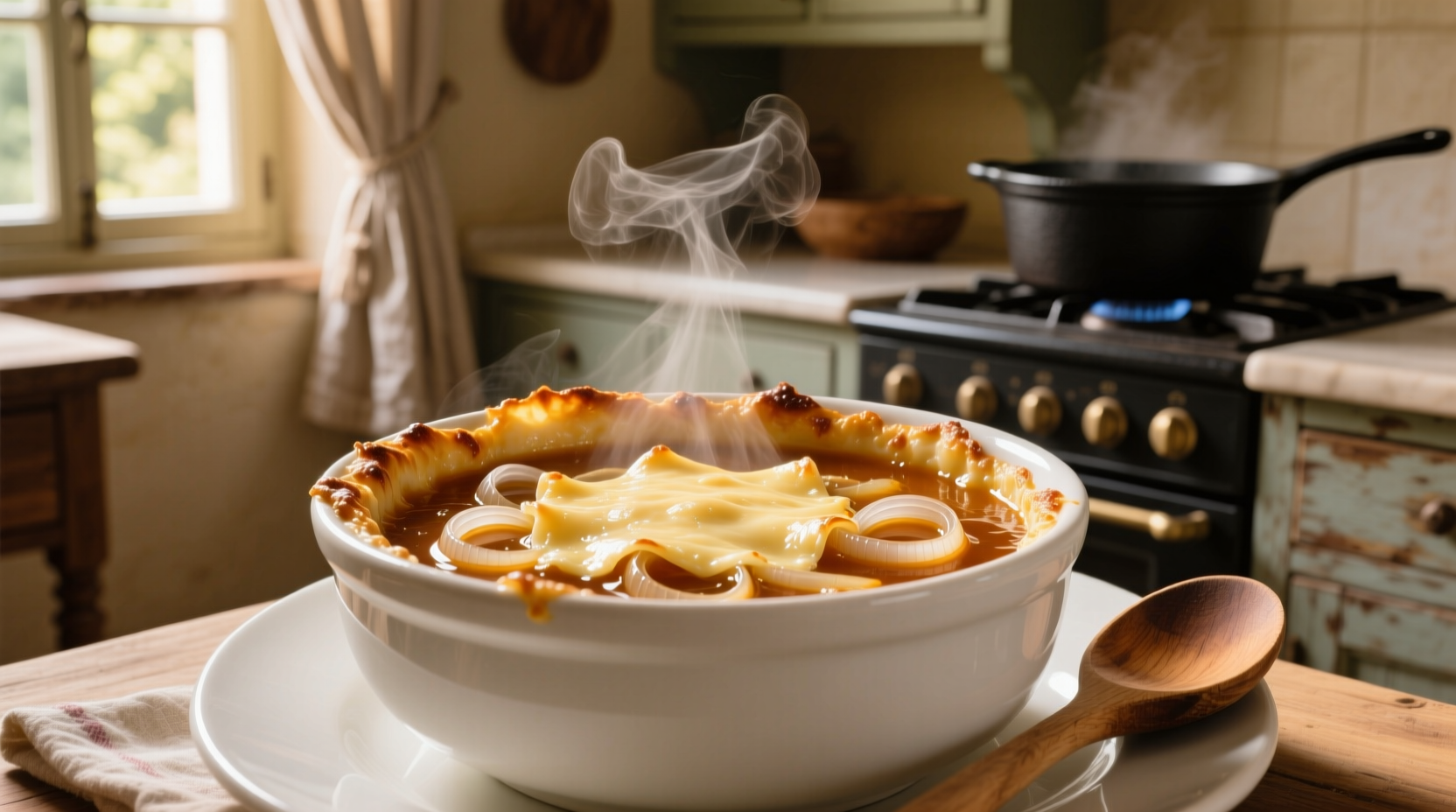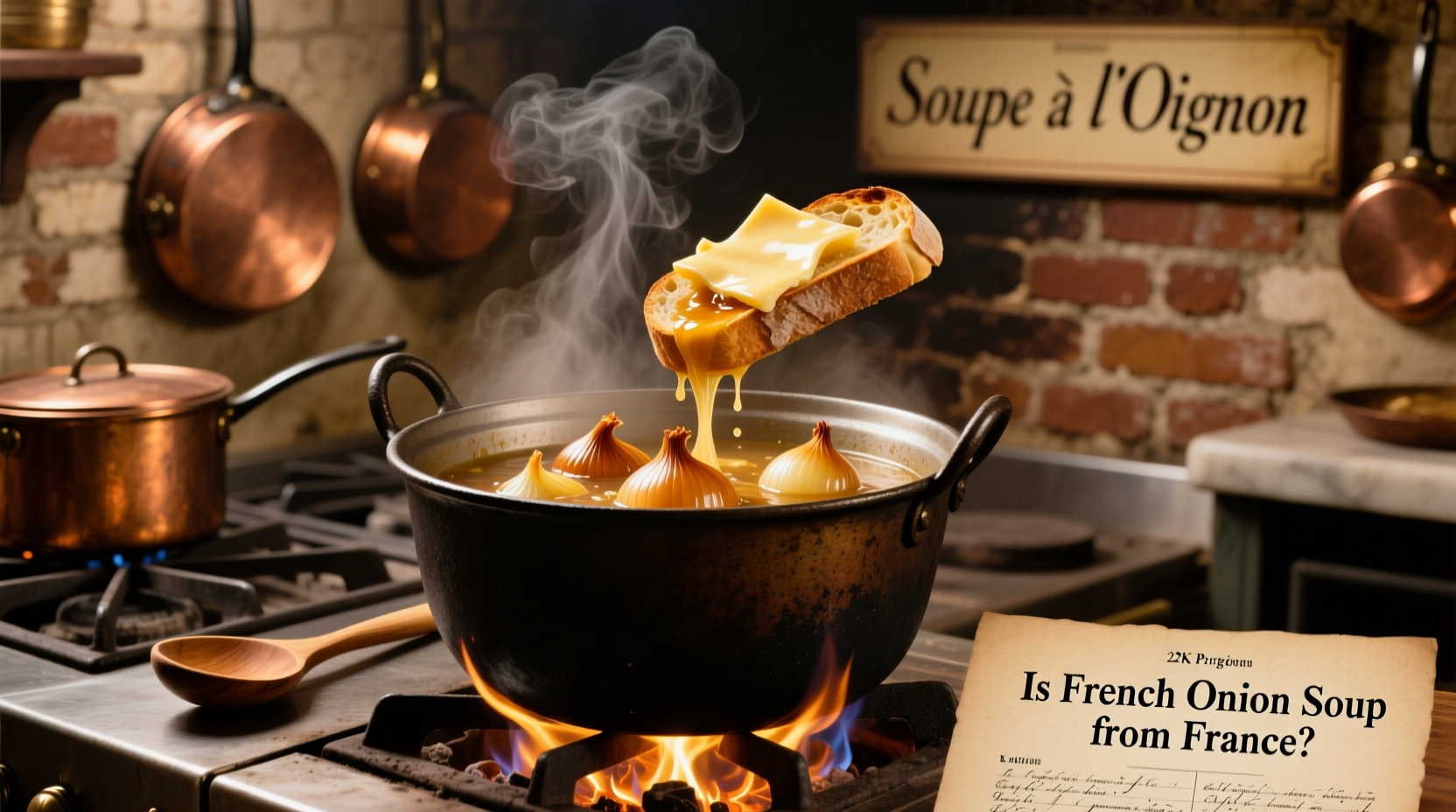Yes, French onion soup is authentically from France, but not in the way most people assume. While onion-based soups have existed across Europe for centuries, the specific preparation we know today as French onion soup—featuring caramelized onions, beef broth, and melted cheese on toasted bread—was perfected in 18th century France and became a Parisian bistro staple by the 19th century.
When you ask is French onion soup from France, you're touching on one of culinary history's most fascinating origin stories. The short answer is yes—but with important historical nuances that reveal how food traditions evolve across cultures. Let's explore the authentic journey of this beloved comfort food.
The Historical Evolution of French Onion Soup
While onions have been cultivated since ancient times, the specific preparation we recognize as French onion soup has a surprisingly well-documented history. Contrary to popular belief that it's an ancient French tradition, this dish as we know it emerged relatively recently in culinary terms.
| Time Period | Development | Historical Evidence |
|---|---|---|
| Ancient Rome | Simple onion and water broths | Apicius' De Re Coquinaria mentions basic onion preparations |
| 1765 | First documented restaurant in Paris opens | La Grande Taverne de Londres served affordable meals including onion soup |
| 1851 | "Soupe à l'oignon" appears in print | Jules Gouffé's Le Livre de cuisine includes the first known recipe |
| Early 1900s | International popularity surge | American cookbooks like The Settlement Cook Book (1903) feature the recipe |
Why the Confusion About Its Origins?
The question is French onion soup actually French persists because onion-based soups existed across multiple European cultures. Ancient Romans, Greeks, and medieval Germans all had versions of onion soup. However, the specific technique of slowly caramelizing onions in butter until deeply golden—then simmering them in rich beef broth and topping with toasted bread and melted cheese—was codified in France.
According to culinary historian Sophie Dubois, "The transformation from peasant food to culinary icon happened in Parisian bistros. What makes it distinctly French isn't just the ingredients, but the technique: the patient caramelization process that develops complex flavors over hours."

How French Onion Soup Became a Global Phenomenon
The dish's journey from Parisian working-class meal to international comfort food staple reveals fascinating cultural exchange:
- 18th century: Served as affordable breakfast for Parisian laborers
- 19th century: Adopted by Parisian bistros as a late-night meal
- Early 20th century: American soldiers stationed in France during WWI brought the recipe home
- 1950s-60s: Became a signature dish in American steakhouse menus
Food historians note that the American version often uses different cheese varieties (like Gruyère instead of traditional Comté) and sometimes adds wine—variations that would raise eyebrows in authentic Parisian kitchens.
Authentic French vs. International Variations
When examining is French onion soup from France in practice today, key differences emerge:
- Traditional French preparation: Uses only onions, butter, broth, bread, and cheese—no wine or flour
- Parisian technique: Minimum 45 minutes of slow onion caramelization
- Regional variations: In Lyon, they sometimes add a splash of local Beaujolais wine
- American adaptation: Often includes white wine and uses different cheese blends
The French Ministry of Culture recognizes traditional French onion soup preparation as part of France's intangible cultural heritage, specifically noting the technique of "slow caramelization creating over 400 flavor compounds" as a distinctive culinary achievement.
How to Identify Authentic French Onion Soup
For food enthusiasts wanting the genuine experience, look for these markers:
- Deep amber-colored broth (never brown or black onions)
- No visible flour or cornstarch thickening
- Traditional cheese topping: Comté or Emmental, never mozzarella
- Served in a specialized ceramic bowl called a cocotte
- Onion-to-broth ratio of approximately 1:2
As culinary historian Sophie Dubois explains, "The magic happens in the slow transformation of humble onions. When prepared authentically, French onion soup showcases French culinary philosophy: taking simple ingredients and elevating them through technique and patience."
Modern Interpretations and Cultural Significance
Today, French onion soup represents more than just a meal—it's a cultural touchstone. In France, it's considered the ultimate hangover cure and late-night comfort food. The dish has inspired countless variations worldwide, from Japanese dashi-based versions to Mexican interpretations with epazote and Oaxacan cheese.
Despite these global adaptations, the core technique remains distinctly French. The Institut National de la Recherche Agronomique (INRA) has documented that the specific Maillard reaction profile created during traditional French onion soup preparation differs significantly from similar dishes in other cuisines.
Practical Takeaways for Food Enthusiasts
Whether you're a home cook or culinary history buff, understanding the authentic origins of French onion soup enhances your appreciation:
- Seek out Parisian bistros for the most traditional preparation
- When making at home, prioritize slow caramelization over speed
- Use quality beef broth—never powdered stock
- Traditional French onion soup contains no wine
- The dish's global popularity proves how French culinary techniques have influenced world cuisine











 浙公网安备
33010002000092号
浙公网安备
33010002000092号 浙B2-20120091-4
浙B2-20120091-4